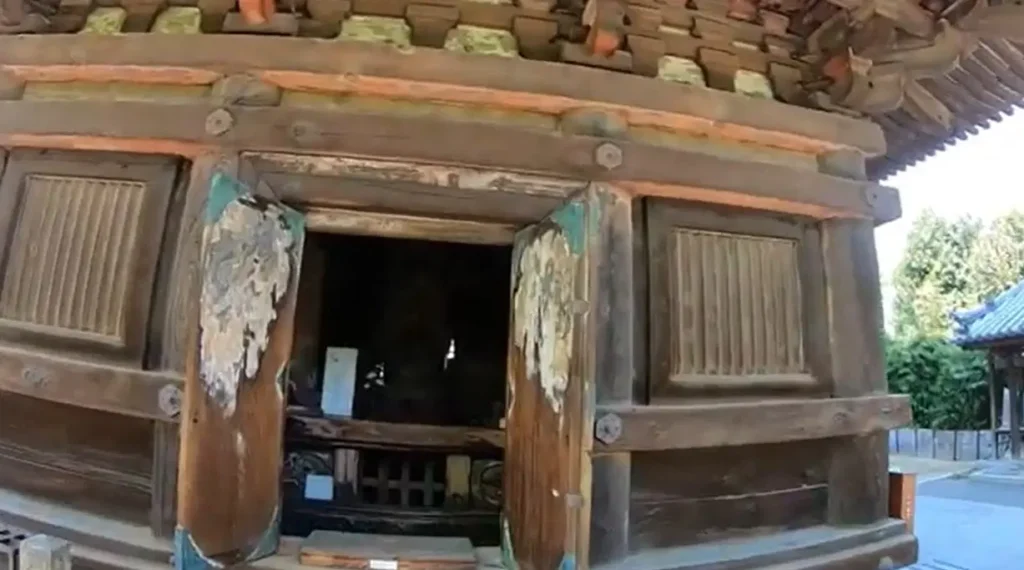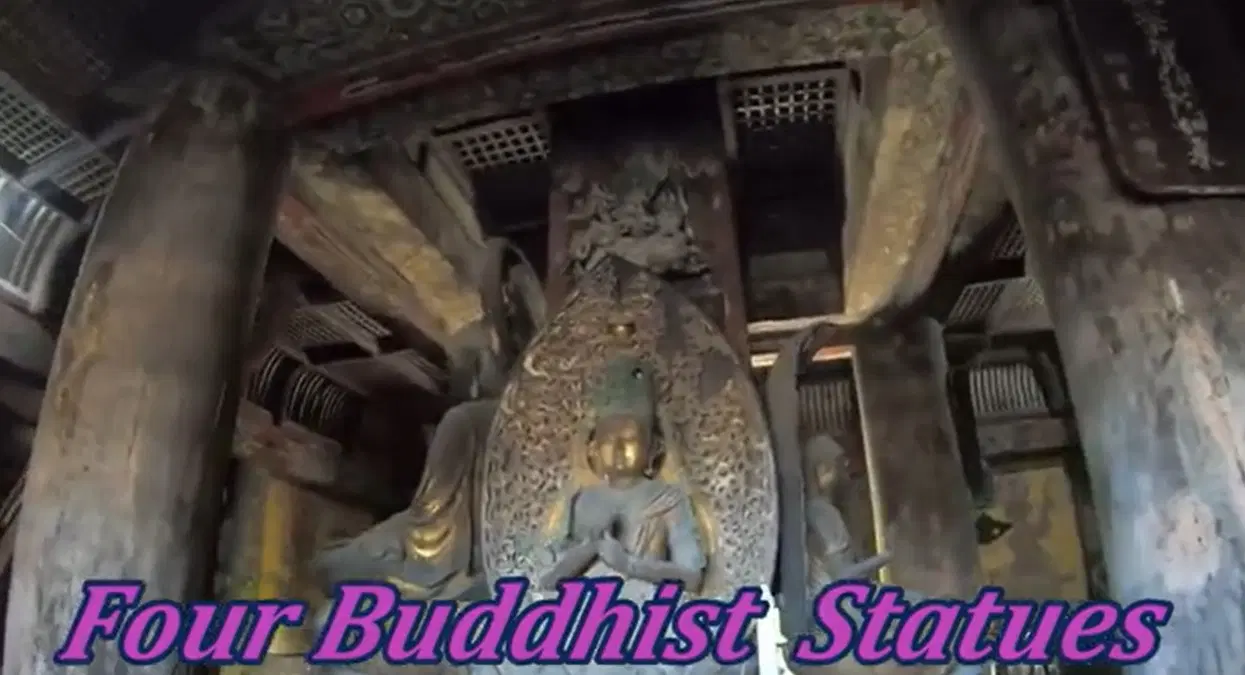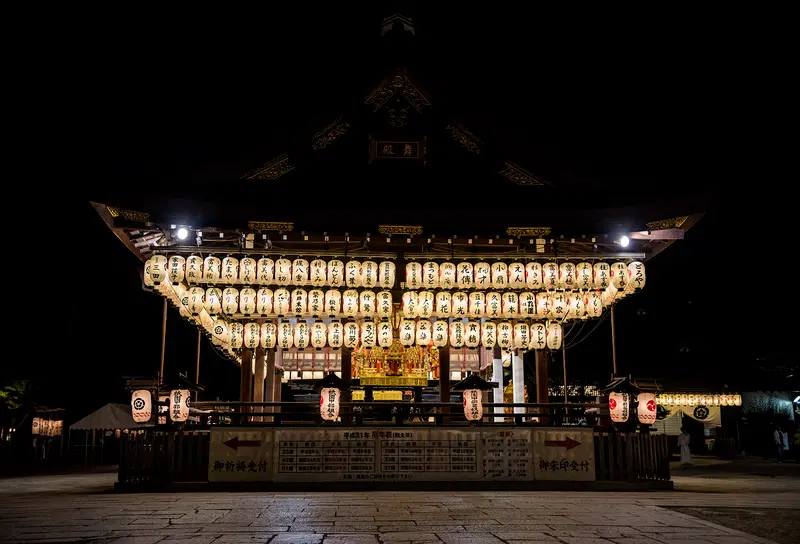Nestled in the heart of Kyoto, Japan, Yasaka Pagoda stands as a stunning emblem of the city’s rich history and architectural beauty. Known locally as Hokan-ji Temple, this five-story pagoda is not only a significant Buddhist temple but also a captivating landmark that attracts millions of visitors each year.
In this post, we will explore the historical significance, architectural features, legends, rituals, festivals, nearby attractions, and travel tips for Yasaka Pagoda.

What is a Pagoda in Buddhist Culture?
A pagoda is a tiered tower with multiple eaves, commonly found in East and Southeast Asia. These structures are often associated with Buddhist temples and serve religious purposes, such as housing sacred relics or serving as places of worship.
Key Features of Pagodas
Architecture: Pagodas typically have an odd number of tiers, ranging from three to thirteen. The roofs curve upwards at the edges, a design that helps in withstanding earthquakes.
Materials: They can be made of wood, brick, or stone. The oldest surviving pagodas are usually made of brick or stone, as wooden ones were more susceptible to fire and decay.
Origins: The design of pagodas evolved from the ancient Indian stupas, which were dome-shaped structures used to house relics and commemorate significant events.
Cultural Significance
Religious Function: Most pagodas are built to honor Buddhist relics and serve as places for meditation and worship.
Symbolism: They often symbolize sacred mountains and are believed to bring peace and prosperity to the surrounding area.
Variations Across Cultures
Pagodas vary significantly in design and function across different cultures:
1. Chinese Pagodas: Typically built with multiple stories and a square or octagonal base, Chinese pagodas evolved from earlier stupas and often feature intricate carvings and decorations.
2. Japanese Pagodas: Known for their graceful lines and integration with nature, Japanese pagodas, such as the famous Yasaka Pagoda & Toji Pagoda in Kyoto, often have a more minimalist aesthetic compared to their Chinese counterparts.
3. Southeast Asian Pagodas: In countries like Thailand and Myanmar, pagodas may take on more elaborate forms, often adorned with gold leaf and intricate mosaics, reflecting local artistic traditions.
Pagodas are not only architectural marvels but also hold deep spiritual significance in the cultures where they are found.

Historical Origins of Yasaka Pagoda
The Yasaka Pagoda, also known as Hokan-ji Temple, has a significant place in the architectural and cultural history of Kyoto, Japan. It was established in the 6th century, around 592 CE, during the Asuka period. Prince Shotoku Taishi, a key figure in promoting Buddhism in Japan, founded the pagoda as a guardian temple for the Yasaka clan.
Early History and Reconstruction
Throughout its history, the Yasaka Pagoda has faced challenges, mainly due to destructive fires. In 1179, during a conflict between the Yasaka Shrine and the nearby Kiyomizu-dera Temple, the pagoda was burned down.
It was later rebuilt in 1191 under the orders of Shogun Minamoto no Yoritomo. However, the pagoda suffered additional fires in 1291 and 1436, leading to more reconstructions.
The current structure of the pagoda was completed in 1440 by Shogun Yoshinori Ashikaga. Despite the multiple reconstructions, the design and architectural elements have remained consistent, preserving its historical integrity. The Yasaka Pagoda stands at a height of 46 meters (151 feet) and serves as a prominent landmark in the Higashiyama district of Kyoto.
Architectural Significance
The Yasaka Pagoda is architecturally significant because of its earthquake-resistant design. It has a central wooden beam that allows it to sway independently, which is crucial in a seismically active region like Japan. This design was implemented during the pagoda’s reconstruction in 948 CE to fix its precarious tilt.
Inside the pagoda, there are sculptures and murals representing the five great Nyorai, or enlightened beings. Additionally, there are four intricately carved Buddha statues positioned at the cardinal points around the pagoda’s base.
Cultural Impact
The Yasaka Pagoda has not only been a religious site but also a source of inspiration for artists and photographers throughout history. Its distinctive silhouette against the Kyoto skyline has made it a popular subject in various forms of art, including Ukiyo-e woodblock prints by renowned artists.
Today, the Yasaka Pagoda continues to be a symbol of Kyoto’s cultural heritage. It attracts visitors from around the world who come to admire its beauty and historical significance.
Its presence in the cityscape showcases the resilience of traditional Japanese architecture and the enduring spiritual traditions in Kyoto.

Local Legends and Myths Surrounding Yasaka Pagoda
The Yasaka Pagoda, also known as Hokan-ji, is not only a significant architectural landmark in Kyoto but also a site rich in local legends and myths that add to its cultural allure.
These stories often intertwine with the historical narrative of the pagoda, reflecting the beliefs and traditions of the people who have revered it over the centuries.
Founding Legend
One of the primary legends associated with Yasaka Pagoda is its founding by Prince Shotoku in the 6th century. Prince Shotoku is a pivotal figure in Japanese history, known for promoting Buddhism in Japan.
According to local lore, the pagoda was established as a guardian temple for the Yasaka clan, who were prominent in the region before the Heian period. This connection to the prince enhances the pagoda’s status as a sacred site.
The Guardian Spirits
The Yasaka Pagoda is said to be protected by various guardian spirits. These spirits are believed to watch over the pagoda and its surroundings, ensuring the safety and well-being of the local community.
This belief in guardian spirits reflects the broader Shinto and Buddhist practices in Japan, where natural and supernatural elements are often intertwined.
The Legend of Buddha’s Ashes
Another compelling myth surrounding the Yasaka Pagoda is the belief that it houses some of Buddha’s ashes beneath its massive central pillar.
This claim adds a layer of spiritual significance to the pagoda, making it a revered site for pilgrims and visitors alike.
The presence of these sacred relics is thought to enhance the spiritual energy of the pagoda, attracting those seeking blessings and enlightenment.
The Echoing Dragon
Local folklore also speaks of a dragon associated with the Yasaka Pagoda. It is said that if one claps their hands while facing a specific pillar within the pagoda, the sound will echo as if responding to the clapping.
This phenomenon is attributed to the dragon painted on the ceiling, believed to be a guardian spirit that reacts to prayers.
In Summary, The Yasaka Pagoda stands as a symbol of Kyoto’s rich cultural and spiritual heritage. The local legends and myths surrounding the pagoda not only enhance its historical significance but also deepen the visitor experience.
Whether it’s the tale of its founding by Prince Shotoku, the belief in guardian spirits, or the echoing dragon, these stories contribute to the mystique of the Yasaka Pagoda, making it a must-visit destination for anyone exploring Kyoto.

Architectural Marvels of Yasaka Pagoda
The Yasaka Pagoda, also known as the Hokan-ji Temple, is a traditional Japanese architectural marvel in Kyoto’s Higashiyama district. Standing at 46 meters (151 feet) tall, it has withstood the test of time.
Unique Architectural Style
The Yasaka Pagoda has a unique architectural style called “honkawara-buki.” It stands out from other pagodas in Japan with its graceful lines, large roof overhangs, and wooden construction. The pagoda’s base also features a serene traditional garden.
Earthquake-Resistant Design
One remarkable aspect of the Yasaka Pagoda is its earthquake-resistant design. Its five stories are built to sway independently around a central wooden beam.
This allows the pagoda to absorb seismic shocks and redirect them to the ground. This design dates back to the reconstruction in 948 CE and serves as a model for architects in seismic regions.
Interior Treasures
Visitors can explore the intricate interior of the Yasaka Pagoda. Inside, they will find four finely carved Buddha statues arranged around the cardinal points at its base. The pagoda also has a giant central pillar that runs through all five stories and a foundation stone that dates back to the original pagoda.
Influence on Local Culture
The Yasaka Pagoda in Kyoto has greatly influenced the local culture. It has been a popular subject for artists, who have created many famous artworks featuring the pagoda.
The pagoda’s location between the Yasaka Shrine and Kiyomizu Temple showcases a blend of tradition and modernity. It represents the resilience of traditional Japanese architecture and the thriving spiritual traditions in Kyoto.
Climbing the Yasaka Pagoda
Visitors can climb up to the second floor of the pagoda for a fee of ¥400. However, children under 12 are not allowed. From the second floor, visitors can enjoy stunning views of Kyoto’s cityscape and the surrounding mountains.
The Yasaka Pagoda is not just a landmark, but a symbol of Kyoto’s cultural heritage and the brilliance of Japanese architecture.
Visiting Yasaka Pagoda: A Comprehensive Guide
The Yasaka Pagoda, located in the Higashiyama district of Kyoto, is a stunning architectural marvel and a significant cultural landmark.
This guide will provide you with all the essential information for planning your visit, including travel options, festivals, opening times, entry fees, and nearby attractions.
Different Modes of Travel
By Air
To visit Yasaka Pagoda by air, you’ll need to fly into one of the nearest airports and then travel to Kyoto. Here are the steps:
1. Arriving in Japan: The nearest major airport to Kyoto is Kansai International Airport (KIX), located approximately 98 kilometers away.
2. Another option is Osaka Itami Airport (ITM), which is about 50 kilometers from Kyoto but primarily serves domestic flights.
3. Chubu Centrair International Airport (NGO): Located in Nagoya, this airport is another alternative, though it is farther from Kyoto compared to KIX and ITM (approximately 160 km).
From the Airport to Kyoto
1. From Kansai International Airport (KIX):
Train: Take the JR Haruka Express to Kyoto Station. The journey takes about 75 minutes.
Bus: Limousine buses are available and take approximately 90 minutes to reach Kyoto Station.
2. From Osaka Itami Airport (ITM):
Bus: Limousine buses are available and take about 55 minutes to reach Kyoto Station.
3. From Chubu Centrair International Airport (NGO):
Train: Take the Meitetsu Line to Nagoya Station, then transfer to the Shinkansen (bullet train) to Kyoto Station. The total journey takes about 2 hours.
Public Transport
The most convenient way to reach Yasaka Pagoda is by taking the Kyoto City Bus. From Kyoto Station, you can catch Bus 100 or 206 to the Kiyomizu-michi bus stop, which is about a 5-minute walk from the pagoda.
Walking
If you are staying in the Higashiyama area or nearby, you can easily walk to the pagoda. The picturesque streets leading to the pagoda are lined with traditional shops and cafes.
Taxi
Taxis are readily available throughout Kyoto and can provide a direct route to the pagoda.
Bicycle
Renting a bicycle is a fantastic way to explore the area surrounding Yasaka Pagoda and enjoy the beautiful scenery. Kyoto is a bike-friendly city with many rental shops and scenic routes. Some recommended rental shops include:
Kyo No Raku Chari
Rental Bicycle Nanakomachi
J-Cycle
Yasaka Pagoda Opening Times and Entry Fee
Opening Hours: The Yasaka Pagoda is open to visitors from 10:00 AM to 3:00 PM. Please note that it may be closed irregularly, so it’s advisable to check ahead before your visit.
Entry Fee: The admission fee is ¥400 for adults. Children under 12 are not permitted to enter the pagoda.
Best Time to Visit
The ideal times to visit Yasaka Pagoda are during the spring (March to May) and autumn (October to November) seasons, when the weather is pleasant and the surrounding scenery is particularly beautiful.
However, if you prefer to avoid crowds, consider visiting early in the morning or later in the afternoon.
Festivals and Rituals
Yasaka Pagoda is closely associated with the Gion Matsuri, one of Japan’s most famous festivals, held every July. The festival includes a parade of elaborately decorated floats and various traditional events. Other notable festivals at the nearby Yasaka Shrine include:
Okera Festival (New Year’s Day)
Setsubun (early February)
Shichi-Go-San (November)
These events often involve traditional dances and rituals, attracting both locals and tourists.
Accommodation
There are several accommodation options near Yasaka Pagoda, ranging from traditional ryokans (Japanese inns) to modern hotels. Some recommended places include:
Gion Hatanaka: A traditional ryokan offering a unique cultural experience.
Hotel Granvia Kyoto: A modern hotel located conveniently near Kyoto Station.
The Celestine Kyoto Gion: A stylish hotel in the heart of the Gion district.
Dress Code
While there is no strict dress code for visiting Yasaka Pagoda, it is advisable to dress modestly, especially since it is a religious site. Wearing comfortable shoes is recommended, as you may need to walk on cobblestone paths.
Traditional Kimono: For a more immersive experience, consider renting a kimono from nearby shops.
Local Delicacies
The area surrounding Yasaka Pagoda is known for its delicious Kyoto cuisine (Kyo-ryori). Some must-try dishes include:
Yudofu: A hot tofu dish often enjoyed in the colder months. It’s typically served in a light broth and accompanied by dipping sauces.
Kaiseki: A traditional multi-course meal showcasing seasonal ingredients. This refined dining experience is a hallmark of Kyoto’s culinary tradition.
Yatsuhashi: A famous Kyoto sweet made from rice flour, sugar, and cinnamon. It comes in two forms: baked and raw (nama yatsuhashi), with the latter often filled with sweet red bean paste.
Matcha Sweets: Kyoto is famous for its matcha (green tea), and you can find various desserts like matcha ice cream, cakes, and matcha-flavored wagashi (traditional Japanese sweets).
Yuba: Tofu skin, a local specialty. It’s often served fresh or dried and can be enjoyed in soups, salads, or as sashimi.
Udon Noodles: Enjoy a hearty bowl of udon noodles, which are thick and chewy, often served in a savory broth with various toppings.
Tempura: Deep-fried seafood and vegetables, known for their light and crispy batter.
Ramen: A popular noodle soup dish with various broths and toppings. While not unique to Kyoto, you can find excellent ramen shops in the area.
Green Tea: Enjoy a traditional Japanese tea ceremony or simply savor a cup of high-quality green tea at one of the many tea houses.
Additionally, there are many street food stalls and restaurants nearby where you can sample local snacks. Exploring the food scene around Yasaka Pagoda is a delightful way to experience Kyoto’s rich culinary heritage.

Nearby Attractions
While visiting Yasaka Pagoda, consider exploring these nearby attractions:
Yasaka Shrine: A popular Shinto shrine known for its beautiful architecture and vibrant festivals. It’s especially famous for the Gion Matsuri, one of Japan’s most celebrated festivals.
Kiyomizu-dera Temple: A UNESCO World Heritage site famous for its wooden stage that offers stunning views of Kyoto.
The temple is also known for its Otowa Waterfall, where visitors can drink sacred water for health, longevity, and success in studies.
Gion District: Known for its traditional wooden machiya houses and geisha culture, this area is perfect for a leisurely stroll.
You might even spot a geisha or maiko (apprentice geisha) in the evenings.
Maruyama Park: Adjacent to Yasaka Shrine, this park is a popular spot for cherry blossom viewing in spring. It’s also a great place for a relaxing walk or a picnic.
Nanzen-ji Temple: A significant Zen temple complex with beautiful gardens, impressive gates, and the famous aqueduct. The temple grounds are expansive and offer a peaceful retreat from the city’s hustle and bustle.
Arashiyama: A scenic area known for its bamboo forest, the iconic Togetsukyo Bridge, and the Iwatayama Monkey Park. It’s a bit farther from Yasaka Pagoda but worth the visit for its natural beauty.
Fushimi Inari Shrine: Known for its thousands of vermilion torii gates that form a path up the sacred Mount Inari. This shrine is one of Kyoto’s most iconic and photogenic sites.
By following this guide, you can plan a memorable visit to Yasaka Pagoda and experience the beauty and culture of Kyoto, Japan.
♣♣You May Also Like: ⇓
- Setagaya Hachimangu Shrine: A Great Journey of Tradition
- Gotokuji Temple, Tokyo, Japan: Beautiful Home of Lucky Cat
- Wonderful Wat Huay Pla Kang In Chiang Rai, Thailand
- Beautiful Wat Rong Khun: Thailand’s Famous White Temple
- Beautiful Mahabodhi Temple: Heart of the Spiritual Glory
Conclusion
Yasaka Pagoda is more than just an architectural marvel. It symbolizes Kyoto’s rich cultural heritage and spiritual depth. It has historical origins and unique architectural features. There are also legends that surround it.
Visiting Yasaka Pagoda offers a captivating glimpse into Japan’s past. Nearby attractions, local delicacies, and vibrant festivals enhance the experience.
It’s a journey through time and tradition. Exploring the serene pathways of the Gion District, savoring Kyoto cuisine, or participating in the lively Gion Matsuri are all part of the experience. Yasaka Pagoda serves as a beacon of history and culture.
Its towering presence and timeless beauty invite you to immerse yourself in the stories and traditions that shaped this iconic landmark.
Plan your visit to Yasaka Pagoda and discover the enchanting blend of history, spirituality, and natural beauty that makes Kyoto a must-visit destination.
Your journey to Yasaka Pagoda promises to be an unforgettable experience, filled with moments of awe and inspiration.
6 thoughts on “Outstanding Yasaka Pagoda: A Timeless Landmark in Kyoto”